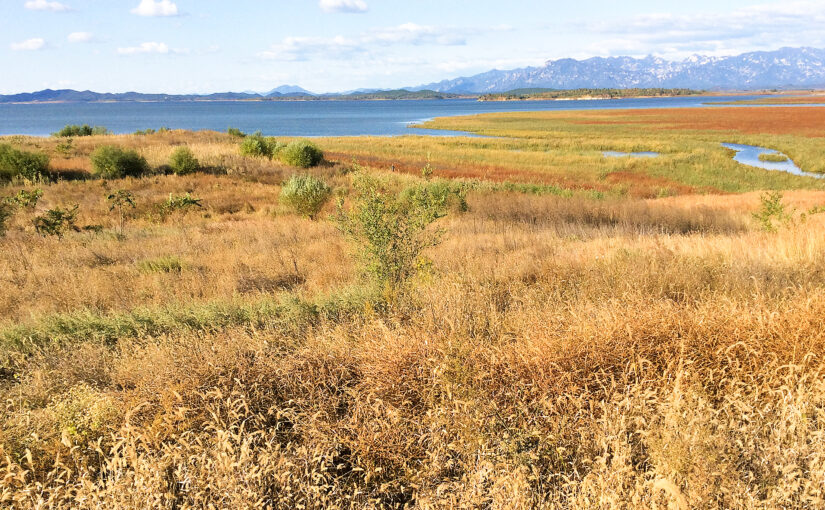by Jan-Erik Nilsén
for shanghaibirding.com

The urban core of Beijing lies at an elevation of 50 m (170 ft.). Bordering urban Beijing, from southwest to northeast, are mountains with peaks reaching 2300 m (7,550 ft.). To the northwest, the Badaling highway passes through a gorge, offering spectacular views of the mountainous landscape. The highway is busy, especially at night, when an endless procession of big trucks passes through, hauling coal from Shanxi and Inner Mongolia to the megacities of Beijing and Tianjin.
YEYAHU AND MIYUN
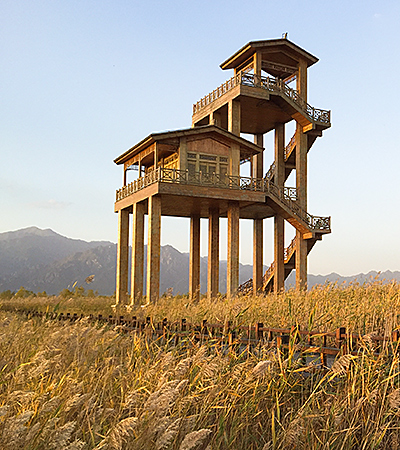
Pass the Badaling highway and find the road to Yeyahu—(Wild) Duck Lake in English. You will be at an elevation of 500 m (1,640 ft.). Yeyahu and nearby Ma Chang are on a plain bordered by steep mountain ridges. The birding is usually good, but during weekends the area can be crowded with noisy non-birder tourists.
After a few years in Beijing, I was very happy to find excellent birding spots around the Miyun Reservoir (40.511651, 117.021812), the largest artificial lake in Asia and the sole source of drinking water for Beijing. There, birders could avoid the crowds and focus solely on birds. Miyun is surrounded by mountains, but the reservoir itself is at a lower elevation than Yeyahu—and that had one big advantage. At Yeyahu, especially during the spring, strong, cold winds sweep down from Mongolia. Sometimes the winds are gale-force, bringing dust and sand that sting the eyes, making birding less pleasant. These same winds bring the dust that turns the sky orange in Beijing. Such winds rarely occurred at Miyun.
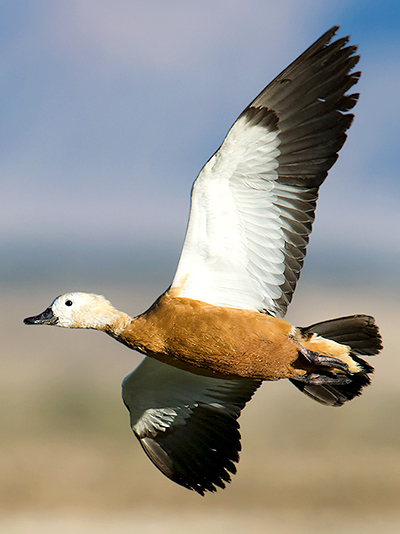
I especially liked the cold winter mornings. At dawn a red sky appears behind the mountain range to the east. The sun has a low trajectory, resulting in delicate, soft, but still bright winter light. The freezing air bites the cheeks. Before me are hundreds of Ruddy Shelduck on the river outlet marshes if they are still open, or on the ice. Every now and then the shelducks are flushed by a White-tailed Eagle. Thousands of Tundra Bean Goose and Common Crane winter on the harvested corn fields. Patrolling the air are bulky Upland Buzzard and in certain years Rough-legged Buzzard. With a little luck I spot a group of magnificent Great Bustard. As I hike along the tracks among the hillocks and scrub, Japanese Quail fly up just a meter from my feet, while passerines such as Pallas’s Reed Bunting and Japanese Reed Bunting call from the scrub. A hissing noise reveals a flock of Vinous-throated Parrotbill, maybe a hundred strong. A curious Chinese Grey Shrike suddenly materializes in a tree just behind my back, and I wonder how long it had been watching me. On the tracks along the corn fields are Asian Short-toed Lark and Mongolian Lark. I hear the dry call of overflying Lapland Longspur. During their irruption years, a flock of Pallas’s Sandgrouse may appear. From a bridge crossing a river I study Long-billed Plover and the strange Ibisbill.
During migration season, flocks of ducks arrive, among them the elusive Baikal Teal. As I scan the reservoir, Baikal Teal could be completely absent for hours, then all of a sudden a flock of 200 would come flying in. My personal record count was 1,300 in a single flock in November 2015. If startled by a raptor, the ducks would fly up and disappear. Such big flocks of Baikal Teal would be on high alert and never allow close views. But once a small flock were hiding in nearby reed beds and a stunningly beautiful male Baikal Teal allowed the happy birder to study, at a reasonable distance through the scope, its strange, beautiful painted head.
With more than a little luck there would be on the water a few of the super-rare Baer’s Pochard. At a distance the more common Ferruginous Duck would pose an identification challenge vs. the Baer’s. Sadly, Baer’s Pochard has declined over the last few decades, and it may be nearing extinction, but every new observation gives a feeling of hope for their future.
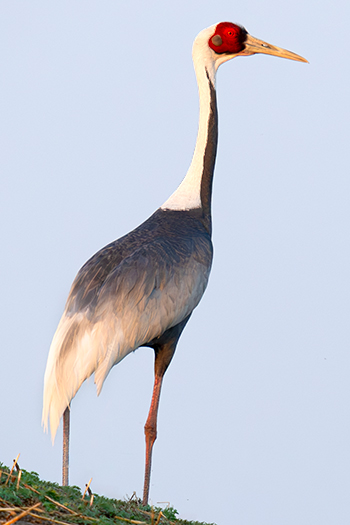
Often in spring the strange-faced but very beautiful White-naped Crane would make a stopover in big numbers for a few days before continuing to its breeding grounds in Northeast China, Mongolia, and the Russian Far East. The first time I saw them was in late March. I remember just a few White-naped Crane descending from the sky to land on the other side of a hillock. Hoping to get a better view, I walked the half kilometer to the top of the hillock. There before me, spread out on a harvested corn field and offering amazing views through the scope, were 904 White-naped Crane. My top count however came in mid-March 2014, when 1,330 White-naped Crane—20 percent of the world’s population—were feeding in a single field.
Common Crane also congregated in their thousands at Miyun. An impressive total of seven crane species have been recorded in the area, the others being Siberian Crane, Sandhill Crane, Demoiselle Crane, Red-crowned Crane, and Hooded Crane. Of the nine species of crane in China, only Sarus Crane and Tibetan Plateau breeder Black-necked Crane are missing from the Miyun list.
Migration season brought views of Amur Falcon and Saker Falcon and in some years Lesser Kestrel. During a day’s birding, the number of raptor species could easily surpass 10 and include such regularly recorded species as Common Kestrel, Merlin, Eurasian Hobby, Peregrine Falcon, Oriental Honey Buzzard, Japanese Sparrowhawk, Eurasian Sparrowhawk, Hen Harrier, Black Kite, and Eastern Buzzard. Less regular were Black-winged Kite, Cinereous Vulture, Chinese Sparrowhawk, and Northern Goshawk.
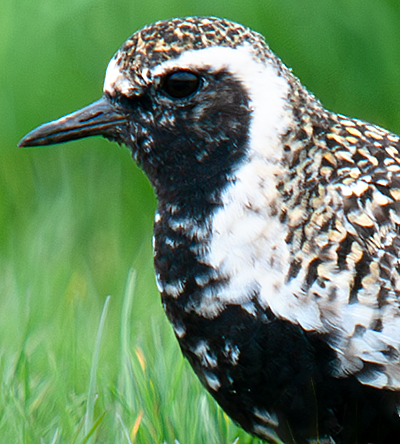
In some years the water level was low and exposed mudflats that attracted such waders as the elegant Long-toed Stint, the brick-red Asian Dowitcher, and Pacific Golden Plover, the latter very attractive in its summer plumage. I also remember a thunderstorm pushing down a flock of 62 Oriental Plover to rest on a field. Small flocks of Relict Gull passed in either a westerly or easterly direction, depending on the season, between the steppes to the northwest and their main wintering area on the Bohai Sea. From the reed beds you would hear Chinese Penduline Tit and Black-browed Reed Warbler and in the scrub and trees Dusky Warbler, Meadow Bunting, and Yellow-throated Bunting. Visit at dusk in early June, and you would hear the roar of singing Oriental Reed Warbler.
Sadly for birders, in the spring of 2016, after a flock of 9 of the ultra-rare Jankowski’s Bunting had been discovered at Miyun, a fence was built around the reservoir and access was no longer permitted. Birding there can no longer be done in any meaningful way.
THE MOUNTAINS OF BEIJING
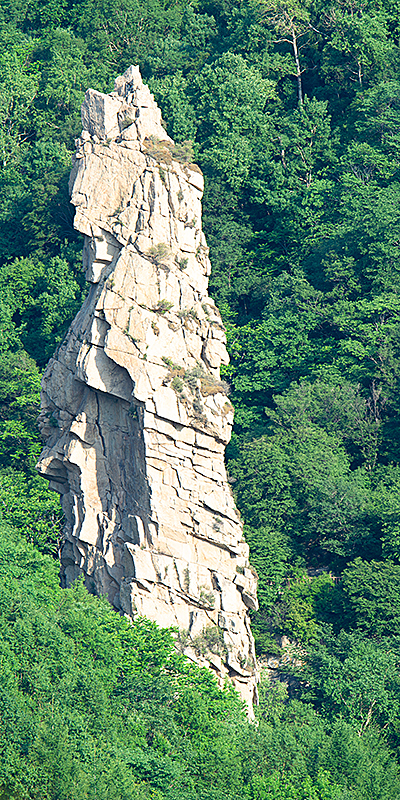
Let us turn to the forests on the mountains west and north of Beijing. Apart from the few roads and tracks, one cannot hike through the Beijing mountain forests. They are spread out on very steep and rocky mountain slopes. The trees grow thickly, jungle-like. If one tries to hike through this terrain, one will, best case, make fifty or a hundred meters an hour. Worst case, one will trip and break one’s leg. Despite the dangers, the vast mountain forests of Beijing have much to thrill the imagination. A Leopard can easily hide in them. Leopards in Beijing, population 20 million? As far-fetched as it may sound, in the vast mountain forests of Xiaowutaishan in Hebei, elev. 3700 m (12,140 ft.), only 150 km (93 mi.) west of Beijing, an Amur Leopard was photographed by a camera trap just a few years ago.
On the mountains near Beijing, the vertical order of the forest types on the slopes is lowest broadleaf, higher up conifer, and finally birch. At the same level as the birch or even higher up are beautiful alpine meadows, rich in flowers. Topography, geology, and the various types of forests are differently spread out on the mountains. A mountain slope facing south is drier, and a slope facing north is cooler, wetter, and more densely forested. The combination of these components is different on every mountain, and consequently the birds can be different.
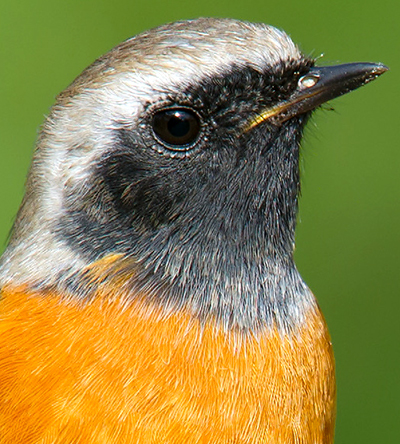
One can usually drive up the mountains to an elevation of 1200–1400 m (3,940–4,590 ft.). One wants to arrive before sunrise so as not to miss the dawn chorus. It is a little chilly in the early morning, with cool winds sweeping down the mountain. The first birds heard in the morning will be one or two Large Hawk-Cuckoo, with their hysterical crescendos. The next bird will usually be Daurian Redstart, singing its first phrases well before dawn. When the very first morning light makes the sky just a bit paler, a few birds will begin to sing, and all at once an amazingly intense dawn chorus will begin. The high intensity of the choristers will continue for an hour before fading.
The Phylloscopus cast is superb. On every mountain you can find Claudia’s Leaf Warbler, Eastern Crowned Warbler, Chinese Leaf Warbler, Two-barred Warbler, Yellow-streaked Warbler, and, with luck, Large-billed Leaf Warbler. Hume’s Leaf Warbler are common on Wulingshan and Haitoushan, i.e., to the northeast and northwest, but not on Lingshan and Baihuashan, to the west and southwest. Ornithologists in recent years have added the Seicercus warblers to Phylloscopus, and we therefore can add Alstrom’s Warbler to the list. It’s annual on Lingshan.
During the summer there is, therefore, a chance to see or at least hear eight species of Phylloscopus. If you go earlier in the season, then you can add to the list migrants Yellow-browed Warbler, Pallas’s Leaf Warbler, Dusky Warbler, Radde’s Warbler, and Arctic Warbler. During their migration they can be found even in parks in deepest urban Beijing. Yellow-browed Warbler in particular can be heard from the tiniest stands of trees in the most urbanized parts of Beijing. The total number of species of this wonderful genus of birds is, then, 13, all to be found in the mountains around Beijing. For comparison, consider that 13 is the number of leaf warbler species occurring regularly in all of Western and Northern Europe.
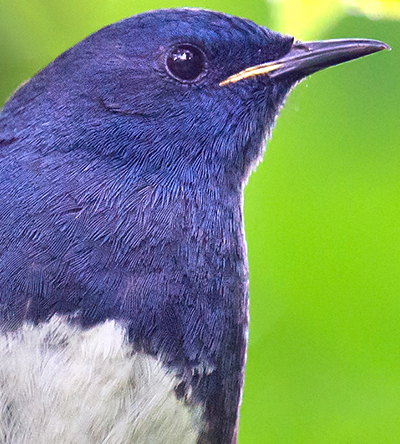
A day on the Beijing mountains also returns White-bellied Redstart, Asian Stubtail, Manchurian Bush Warbler, Chinese Thrush, Chinese Beautiful Rosefinch, and Godlewski’s Bunting. Green-backed Flycatcher and Zappey’s Flycatcher are also there. Semi-rare but regular are Brown-flanked Bush Warbler extending from the south and Slaty-backed Flycatcher from the southwest. The Himalayan mountainsides and forests, so rich in laughingthrushes, have lent just one species to the Beijing mountains: Plain Laughingthrush, or with an alternative name to make it sound more interesting: Pere David’s Laughingthrush. Babblers are represented by Beijing Babbler, previously known as Chinese Hill Warbler and White-browed Chinese Warbler until science decided that it was a babbler. My friend and partner Craig Brelsford wrote about our exciting encounter on Wulingshan with Gansu Bluetail, also known as Qilian Bluetail.
Siberian Blue Robin sings its very pleasant song on every Beijing mountain. When experiencing the mountain at dusk, the song seems less intense and more relaxed than when the robins have to compete for attention in the intense dawn chorus. The song serves as a melancholic background to nice evening views over the dramatically steep mountains, softened by low hanging clouds and a low sun turning the sky and landscape red. Grey-sided Thrush, on the other hand, seems to sing more intensely and aggressively at dusk than at dawn.
Hmm … I had better cut short my description of Beijing mountain dusks, or I will begin missing them too much.
Next: Join me as I bird Inner Mongolia, Qinghai, and other spectacular parts of China’s arid interior.
PHOTOS
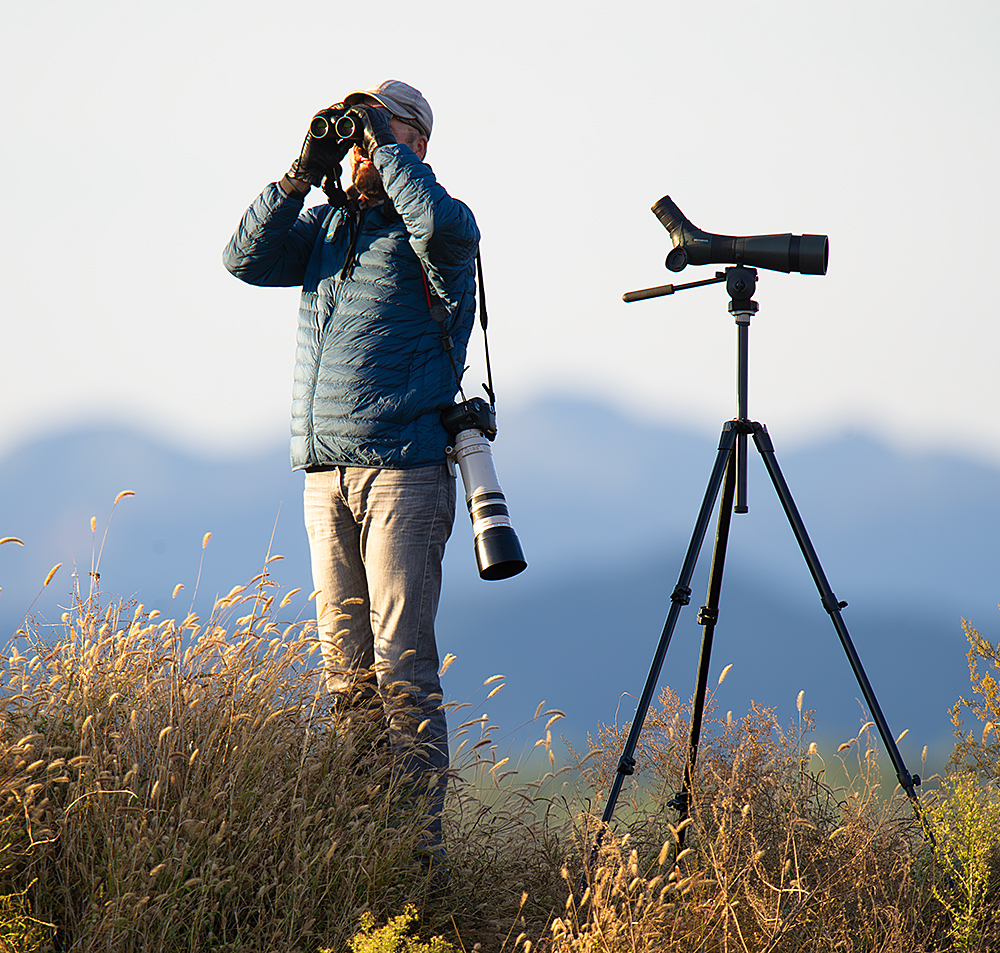
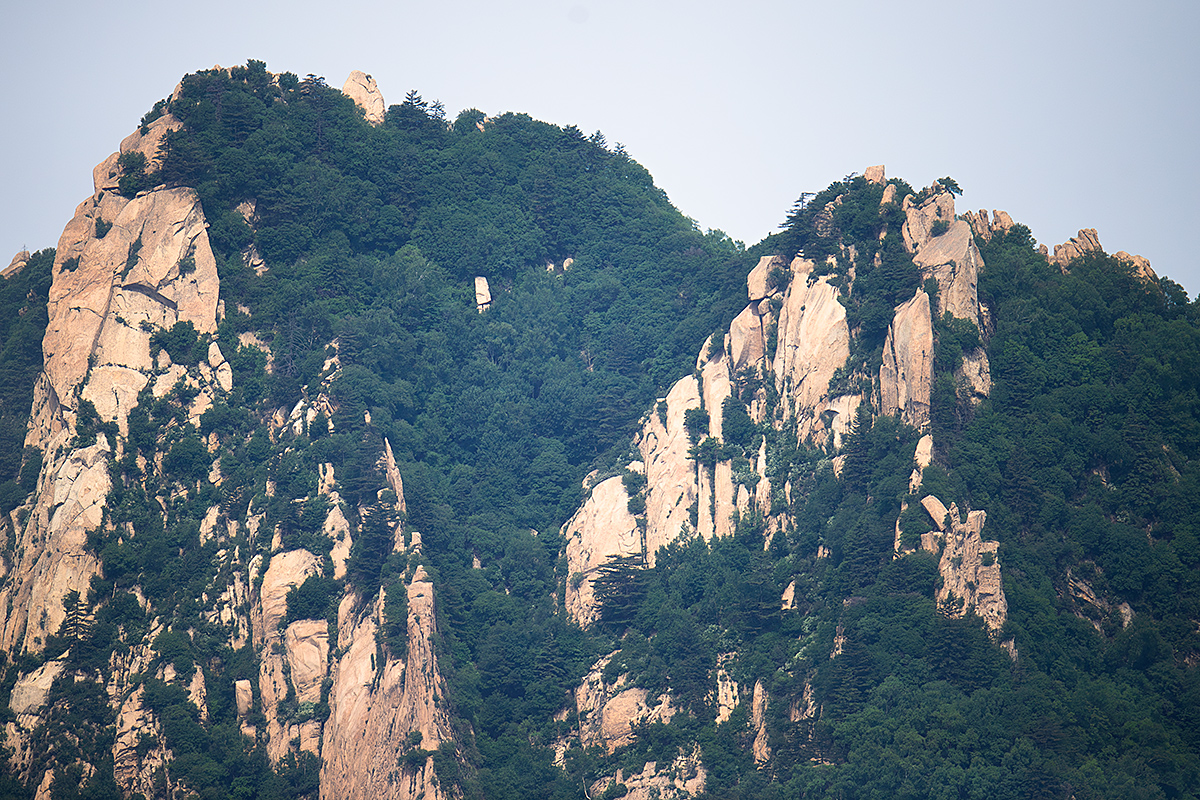
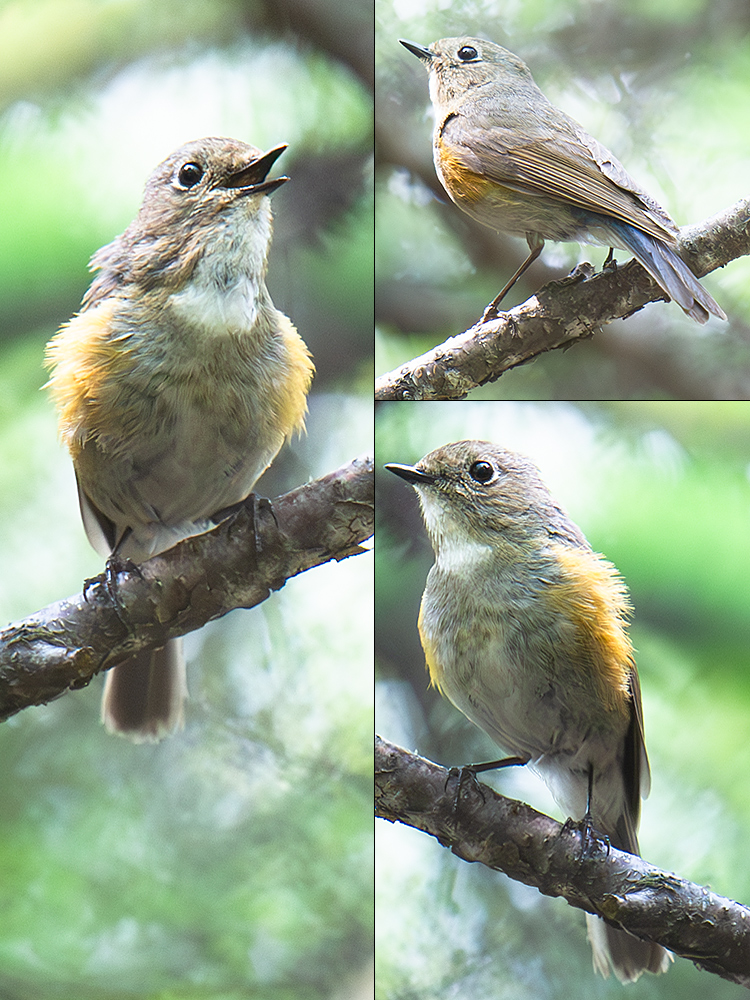
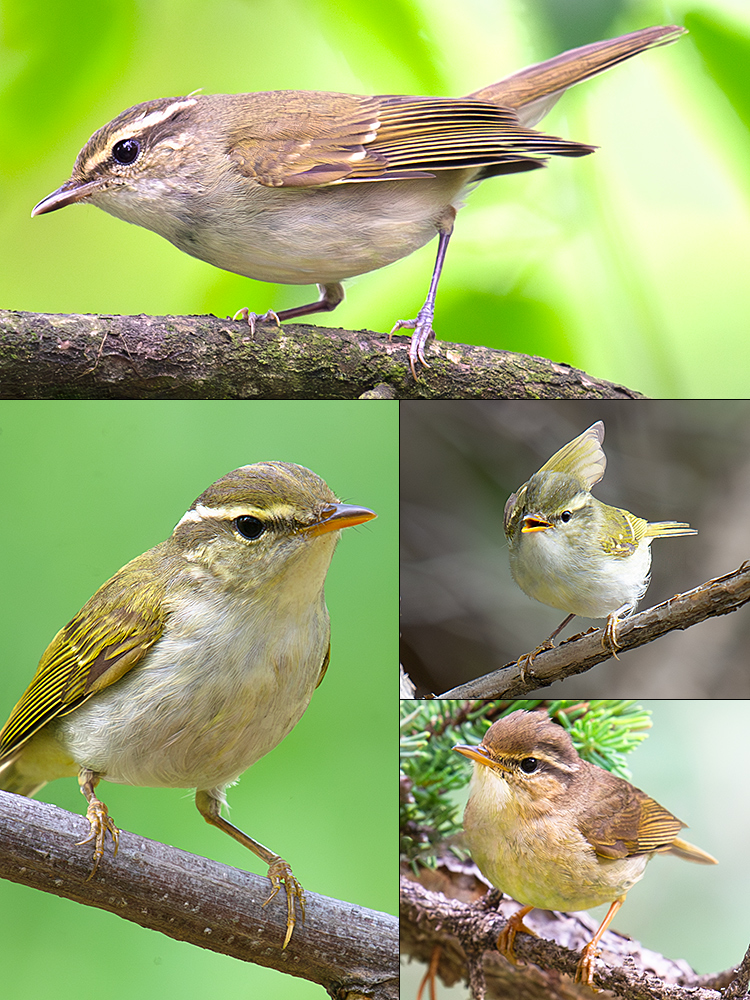
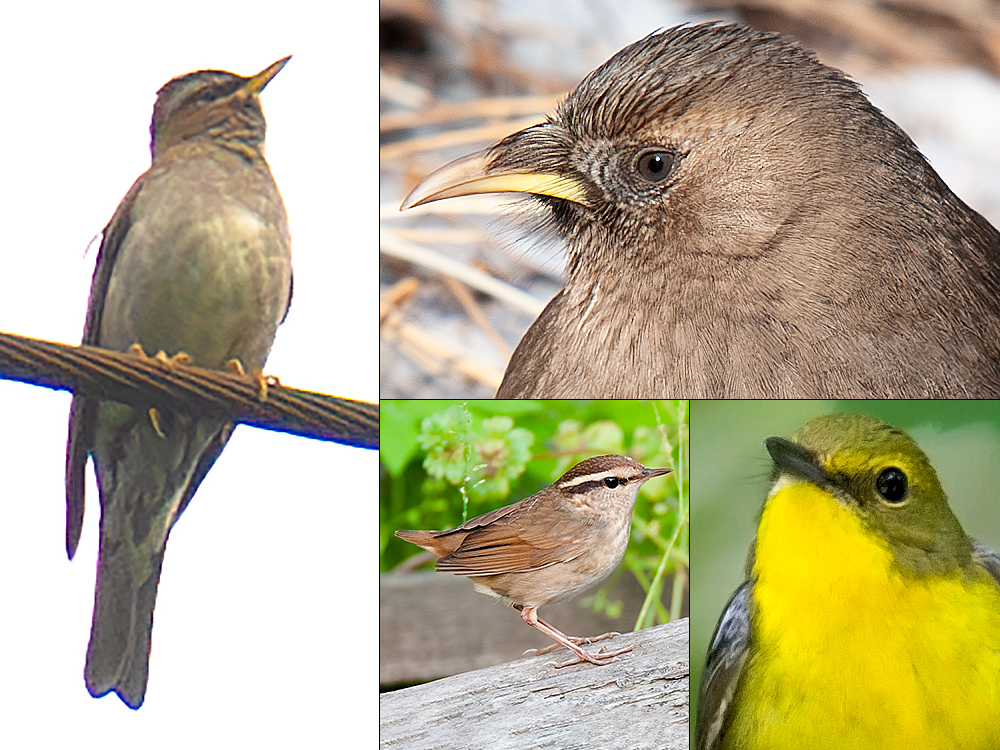
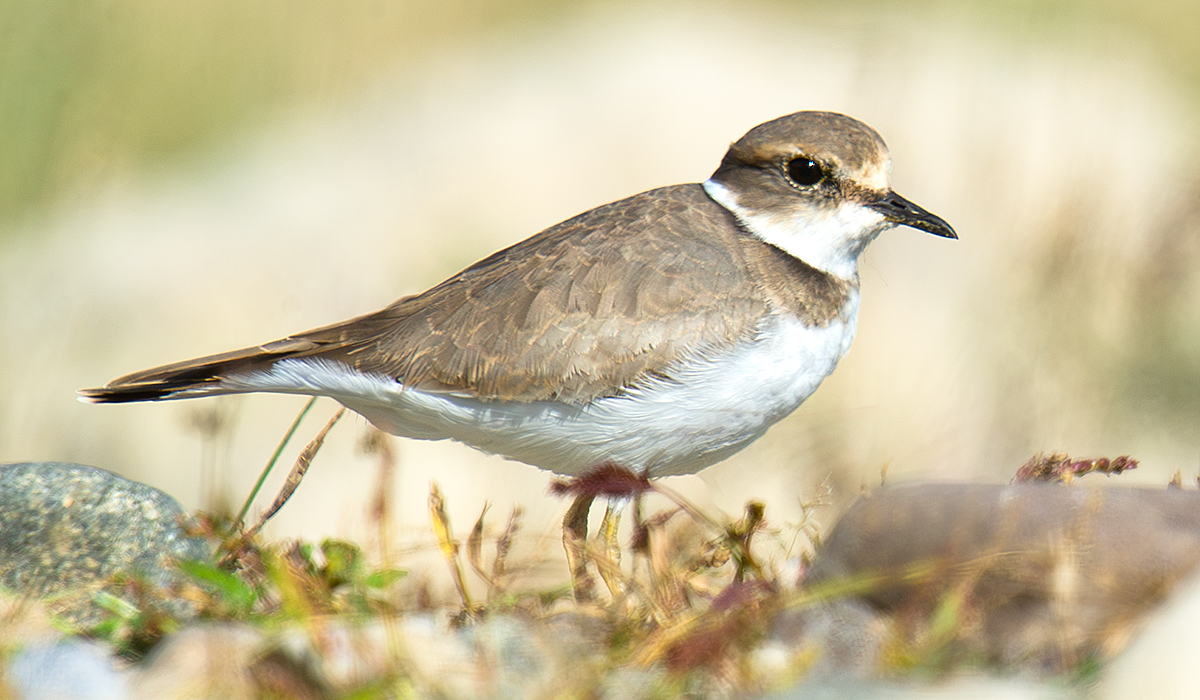
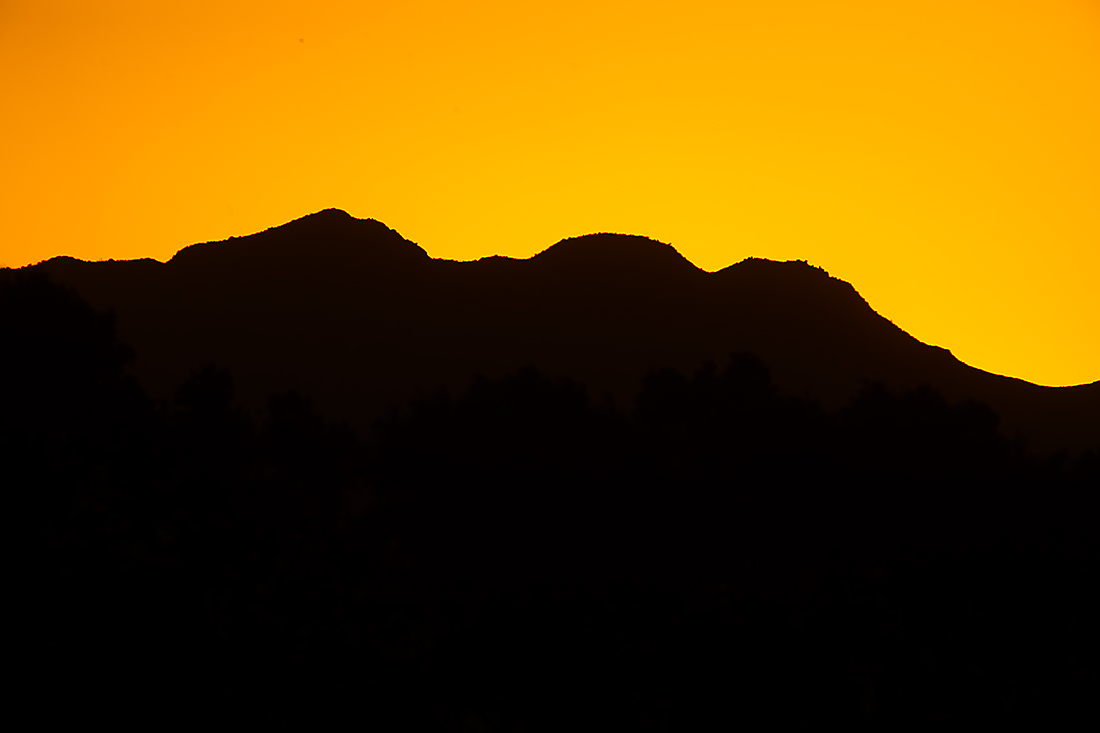
THE THRILL OF BIRDING IN CHINA
This post is the second in Jan-Erik Nilsén’s four-post series on The Thrill of Birding in China. Click any link:

• The Thrill of Birding in China (Introduction): I stayed in China 12 years because I fell in love with the birding there, writes Swedish birder Jan-Erik Nilsén. China abounds in bird species because it is a large country on the Eurasian supercontinent with an endless array of habitats, from muddy seacoasts to high-altitude deserts. Forests in the north provide a link to Europe.
• The Thrill of Birding in Beijing (you are here)
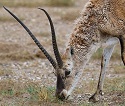
• The Thrill of Birding China’s Arid Interior: Inner Mongolia, Qinghai, and Xinjiang offer unmatched opportunities to birders. Near the Argun River in northern Inner Mongolia, I had Baikal Teal and Blyth’s Pipit, in Qinghai I found high-altitude specialist Güldenstädt’s Redstart and amazing mammals such as Tibetan Antelope, and in Xinjiang I ticked Central Asian specialties Red-fronted Serin and Eversmann’s Redstart.
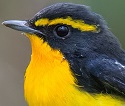 • The Thrill of Birding Shanghai and the Bohai Sea Coast: Shanghai’s Cape Nanhui showed me an astonishing number of East Asian migrants, among them Japanese Yellow Bunting and Narcissus Flycatcher. Nearer my home in Beijing, the Bohai Sea coast gave me waders and gulls by the thousands, plus rarities Nordmann’s Greenshank and Spoon-billed Sandpiper.
• The Thrill of Birding Shanghai and the Bohai Sea Coast: Shanghai’s Cape Nanhui showed me an astonishing number of East Asian migrants, among them Japanese Yellow Bunting and Narcissus Flycatcher. Nearer my home in Beijing, the Bohai Sea coast gave me waders and gulls by the thousands, plus rarities Nordmann’s Greenshank and Spoon-billed Sandpiper.
Featured image: Miyun Reservoir, Beijing, as it appeared in October 2015. Recalling scenes like this, shanghaibirding.com contributor Jan-Erik Nilsén writes, “Patrolling the air are bulky Upland Buzzard and in certain years Rough-legged Buzzard. With a little luck I spot a group of magnificent Great Bustard. Hiking along the tracks among the hillocks and scrub, Japanese Quail fly up just a meter from my feet, while passerines such as Pallas’s Reed Bunting and Japanese Reed Bunting call from the scrub.” Coordinates of this location: 40.511597, 117.022011. Elevation: 140 m (470 ft.) (Elaine Du)
